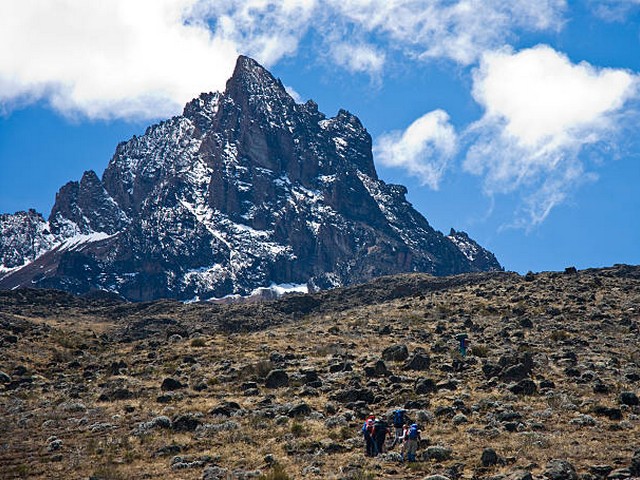Kilimanjaro Summit Photography: How To Get The Perfect Shot
Standing majestically above the African plains, Mount Kilimanjaro isn't just a mountain; it's a canvas where nature has painted one of its finest landscapes. For those who seek not only to conquer its heights but also to capture the essence of this iconic peak, photography at Kilimanjaro's summit offers an exhilarating challenge. At the Kilimanjaro Centre for Trekking and Ecotourism (KCTE), we understand the allure of Kilimanjaro is not only in the climb but in the potential to bring home stunning photographic souvenirs that encapsulate your adventure. This blog post delves into how you can achieve that perfect summit shot, ensuring your memories of Kilimanjaro are as breathtaking as the climb itself.
Preparing for Your Photographic Expedition
Choosing the Right Equipment
To ensure you capture the pristine beauty of Kilimanjaro, selecting the right camera equipment is crucial. A good quality DSLR or mirrorless camera with a versatile zoom lens can be your best friend on the mountain. Remember, weight is a factor on such an arduous climb, so consider a camera that strikes a balance between functionality and portability. Don't forget extra batteries, as cold temperatures can drain them faster than usual, and a lightweight tripod for those perfect sunrise and sunset shots.
Understanding the Climatic Challenges
Kilimanjaro's summit, Uhuru Peak, stands at a daunting 5,895 meters (19,341 feet) above sea level. The air is thin, temperatures can be bitterly cold, and weather conditions change swiftly. Familiarizing yourself with these conditions and preparing accordingly will not only ease your climb but also enhance your photography experience. Consider using camera bags that have good insulation and bring along silica gel packets to ward off lens fogging.
Mastering Kilimanjaro Photography Techniques
Best Times for Photography
The golden hours—shortly after sunrise and just before sunset—are magical on Kilimanjaro. The low sun offers a soft, diffuse light which accentuates the rugged textures of the landscape and casts dramatic shadows. Planning your summit bid to coincide with sunrise could provide you with awe-inspiring views of the ice fields and the vast African plains below, bathed in golden light.
Composition and Perspective
On Kilimanjaro, every angle offers a new perspective. Try to capture the vastness of the landscape by using wide-angle shots. Include elements such as fellow climbers or distinctive rock formations in the foreground to give a sense of scale to your images. Experiment with different angles and perspectives to add depth and intrigue to your photographs.
Capturing the Human Element
Including climbers in your shots adds a compelling narrative to your photos. A silhouette of a climber against the vast backdrop of the crater rim, or a portrait of a triumphant smile at the summit, can evoke powerful emotions and a deep connection to the moment.
Ensuring Ethical and Environmental Considerations
Photography on Kilimanjaro is not just about capturing stunning images but also respecting the natural environment and local culture. Be mindful of the flora and fauna, and adhere to the principles of Leave No Trace to ensure that Kilimanjaro remains pristine for future generations of climbers and photographers.
Post-Photography Tips
Once you've descended and are back to the warmer climes of lower altitudes, take the time to backup and review your photographs. Post-processing can be vital in bringing out the details and colors of your Kilimanjaro experience. Simple adjustments to exposure, contrast, and color balance can help in making your summit shots as vivid and memorable as the actual experience.
Why Climb with Kilimanjaro Centre for Trekking and Ecotourism (KCTE)?
At KCTE, we not only provide expert guides and support for your trekking needs but also understand the nuances of high-altitude photography. Our guides are trained to help you capture the best possible shots, ensuring that your Kilimanjaro memories are beautifully preserved. By choosing KCTE, you're opting for a journey that's safe, environmentally responsible, and photographically productive.
FAQs
What is the best time of year for Kilimanjaro photography?
The best months for clear skies and optimal photography on Kilimanjaro are typically from late June to October, and from late December to early March.
Do I need any special permits for photography on Kilimanjaro?
No special permits are required for personal photography, but commercial photographers should check for specific regulations.
Can beginners handle photography while climbing Kilimanjaro?
Absolutely! With the right preparation and guidance from our experts at KCTE, even beginners can capture great photos. Remember, it's about enjoying the process as much as the result.
How do I protect my camera from the cold on Kilimanjaro?
Keep your camera close to your body during the climb to keep it warm, and use insulated camera bags. Also, always have those silica gels handy to prevent lens fog.
In conclusion, capturing the perfect shot from the summit of Kilimanjaro combines the right preparation, the correct equipment, and the spirit of adventure. It's about telling a story through your lens, a story of endurance, beauty, and the triumph of the human spirit. Whether you're a seasoned photographer or a passionate beginner, Kilimanjaro offers a unique backdrop for stunning photography. Ready to embark on this breathtaking journey and capture the summit in all its glory? Book your climb with Kilimanjaro Centre for Trekking and Ecotourism (KCTE) today, and let us help you take home more than just memories.




